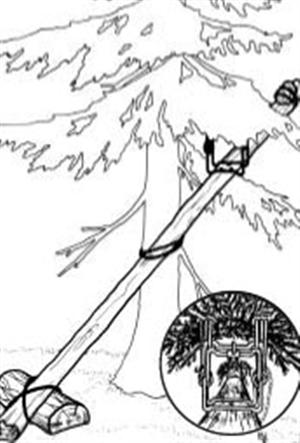History of Hunting and Trapping
Aboriginal people have hunted and trapped animals for food, shelter, clothing, tools, and trade for centuries. Traditional methods of capture included wood or rock deadfalls, pits, nets or wooden enclosures, and sinew snares attached to spring poles (Fur Institute of Canada 2004).
In western Canada, European trapping of furbearing animals and trading of pelts dates back to the mid-1600s. Beginning in the late 16th century, aboriginal trappers accepted European iron traps, and by 1850, steel leg-hold traps were adopted from Europeans and used widely across Canada. This marked the beginning of Canada’s modern fur industry (Fur Institute of Canada 2004).
By the mid-1770s, competition in the fur trade was building. The Hudson’s Bay Company began to build inland posts to compete with other traders, such as the Montreal-based North West Company. The North West Company, in turn, expanded their posts inland as well.
In 1778, Peter Pond reached the delta of the Athabasca River, just south of Lake Athabasca, and established a post for the North West Company. In 1788, the Company built more posts in the Athabasca basin, including one near Fort Chipewyan on the south shore of Lake Athabasca. Competing traders built posts on the Peace River and at Fort Vermilion. By 1850, the largest and most important fur trade centres in Alberta were the Fort Edmonton and Fort Chipewyan posts (Heritage Community Foundation 2001).
Some posts continued to operate into the 1900s; parts of the post at Fort Chipewyan were used until 1964. In much of northern Canada, the fur trade remains a mainstay of the economy, especially for first nations and Métis people (Heritage Community Foundation 2001). Today, this profitable industry is carried on by some 2,300 Albertans. Trappers in Alberta produced over $2.1 million of furs in 2000–2001 (ASRD 2008a).









